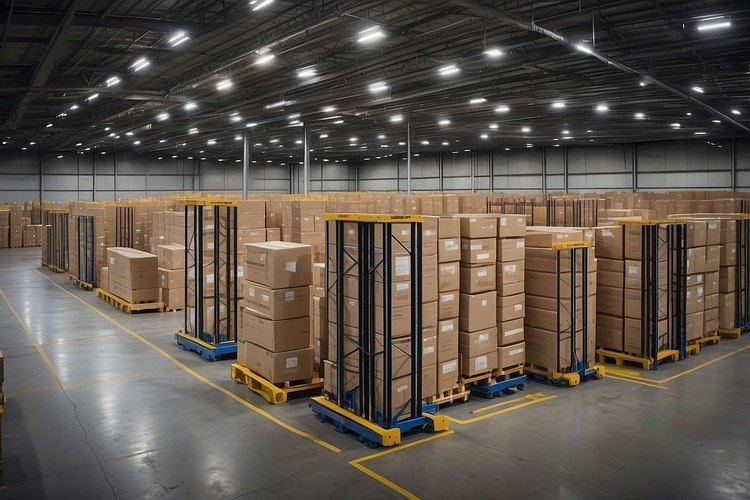Compliance and standards for imported construction metals
Imported construction metals require careful compliance with international and local standards, consistent documentation, and reliable supply chain practices. This article explains key regulatory frameworks, traceability requirements, quality controls, and sustainability considerations relevant to procuring and using imported metals in building projects.

Imported construction metals present complex regulatory and technical requirements that affect every stage from procurement to on-site installation. Understanding applicable international and national standards, required documentation for customs and inspection, and the practical implications for alloy selection, fabrication, storage, and logistics reduces risk on projects. This overview clarifies how traceability, quality assurance, and sustainability expectations intersect with procurement and distribution practices for materials used in structural and architectural applications.
Metals compliance: what standards apply?
Different jurisdictions reference international standards such as ISO, ASTM, EN, and national building codes to regulate material performance, chemical composition, and mechanical properties. For imported metals, customs and certification bodies typically require mill test reports (MTRs) or certificates of conformity that map to these standards. Compliance means verifying that the alloy composition, heat treatment, and mechanical tests listed on documentation correspond to project specifications. Regulatory focus can include corrosion resistance, fire performance, and load-bearing characteristics for structural metals. Knowing which standards apply at the destination and in any transit countries helps avoid costly delays or rejections.
Procurement and sourcing: documentation needs
Procurement teams must insist on clear documentation from suppliers and intermediaries. Essential paperwork often includes commercial invoices, bills of lading, MTRs, certificate of origin, and any third-party inspection or testing reports. When sourcing alloys suited for construction, specify required standards and testing protocols in purchase orders and contracts. Suppliers should also provide traceability identifiers such as heat numbers and batch references that link shipment items back to the original mill tests. Transparent procurement and rigorous supplier audits reduce the risk of receiving non-conforming inventory and support contractual compliance with clients and regulators.
Traceability and inventory: tracking materials
Traceability is central to compliance: it ensures each piece of material can be linked to test results and manufacturing records. Implement inventory systems that record heat numbers, material grade, test certificates, and physical storage locations. Track chain-of-custody through warehousing, cross-docking, and distribution to construction sites. Digital labeling and barcode or RFID systems improve efficiency and reduce misallocation of critical items. For projects with long lifecycles or phased deliveries, accurate traceability also supports future maintenance, replacement, or forensic analysis when assessing structural performance or failure.
Quality assurance and alloy specifications
Quality assurance covers incoming inspection, sampling, destructive and non-destructive testing, and conformity checks against specified alloy grades. Fabrication firms need to confirm weldability, tensile strength, and elongation values for alloys before cutting or joining. When alloys deviate from specifications, documented corrective actions and segregation of non-conforming stock are required. Independent lab testing can verify claims when supplier documentation is incomplete or inconsistent. Robust QA protocols protect against field failures, rework, and liability, and they form the basis for acceptance criteria between owner, contractor, and supplier.
Logistics and distribution: transport compliance
Logistics for imported metals must align with packaging, handling, and transport regulations to protect material integrity and maintain compliance. Corrosion protection, proper dunnage, and secure lashings prevent damage during transit. Shippers and forwarders should be aware of any dangerous goods classification for coated or treated products, special import permits, and customs valuation rules. Distribution planning also considers lead times, warehousing conditions to prevent contamination, and staging near fabrication sites to streamline fabrication and installation schedules. Clear communication between procurement, logistics, and site teams reduces disruptions and ensures traceability is preserved through each handoff.
Sustainability and fabrication practices
Sustainability expectations are increasingly part of compliance frameworks, with requirements for recycled content declarations, life-cycle assessments, and environmental product declarations (EPDs) in some markets. Fabrication processes should document energy usage, waste management, and recycling strategies to meet client or regulatory sustainability criteria. Choosing alloys with established recycling pathways and sourcing from mills with certified environmental management systems can support green building certifications. Sustainable sourcing must be balanced with technical suitability and cost considerations, and documentation of environmental attributes should accompany other compliance records.
Imported construction metals demand an integrated approach that blends standards knowledge, rigorous procurement documentation, traceability systems, and quality controls. By aligning supplier contracts, inventory processes, logistics planning, and sustainability reporting, project teams can reduce non-conformance risk and ensure materials meet structural, safety, and regulatory expectations throughout the supply chain.






